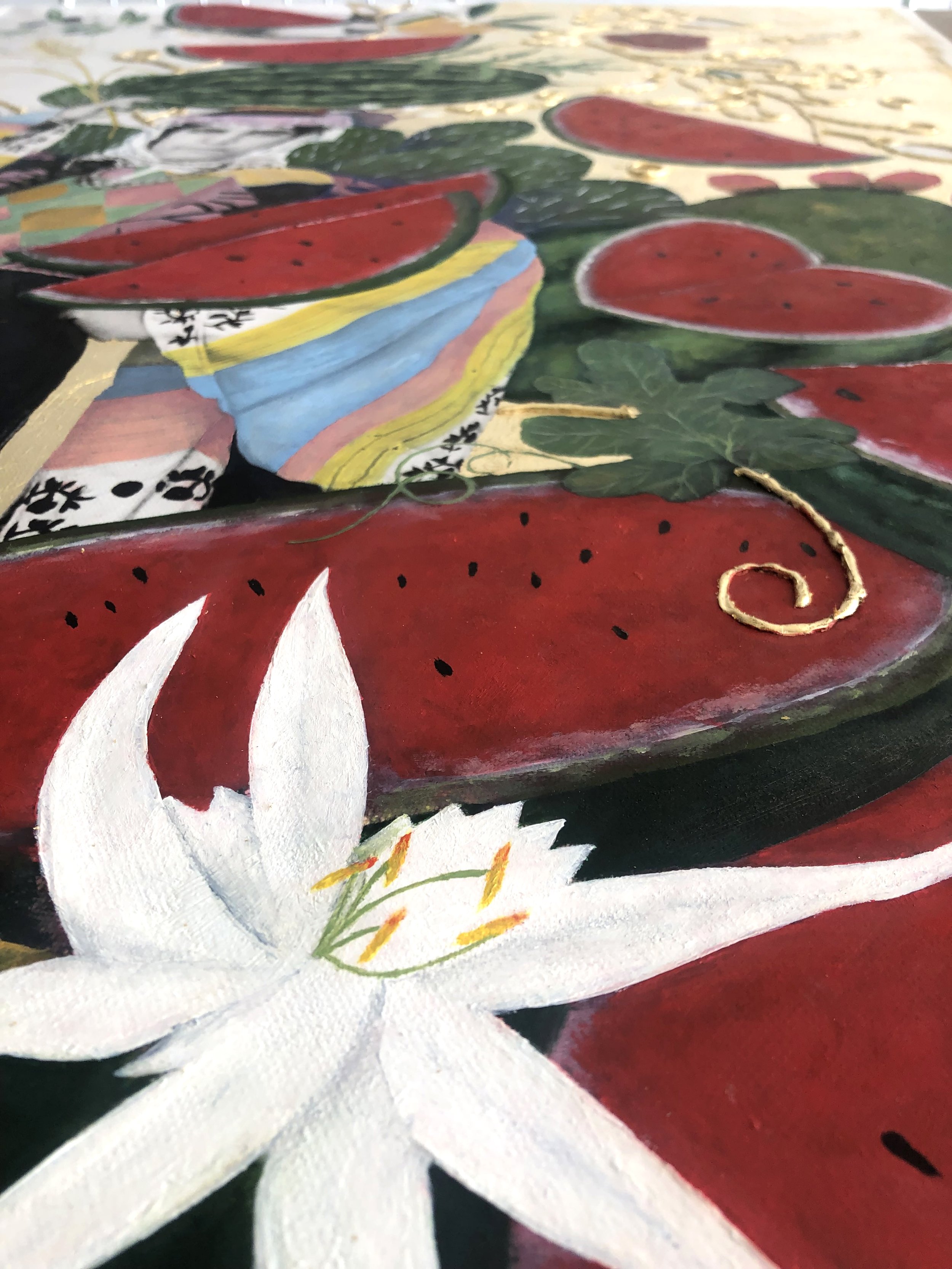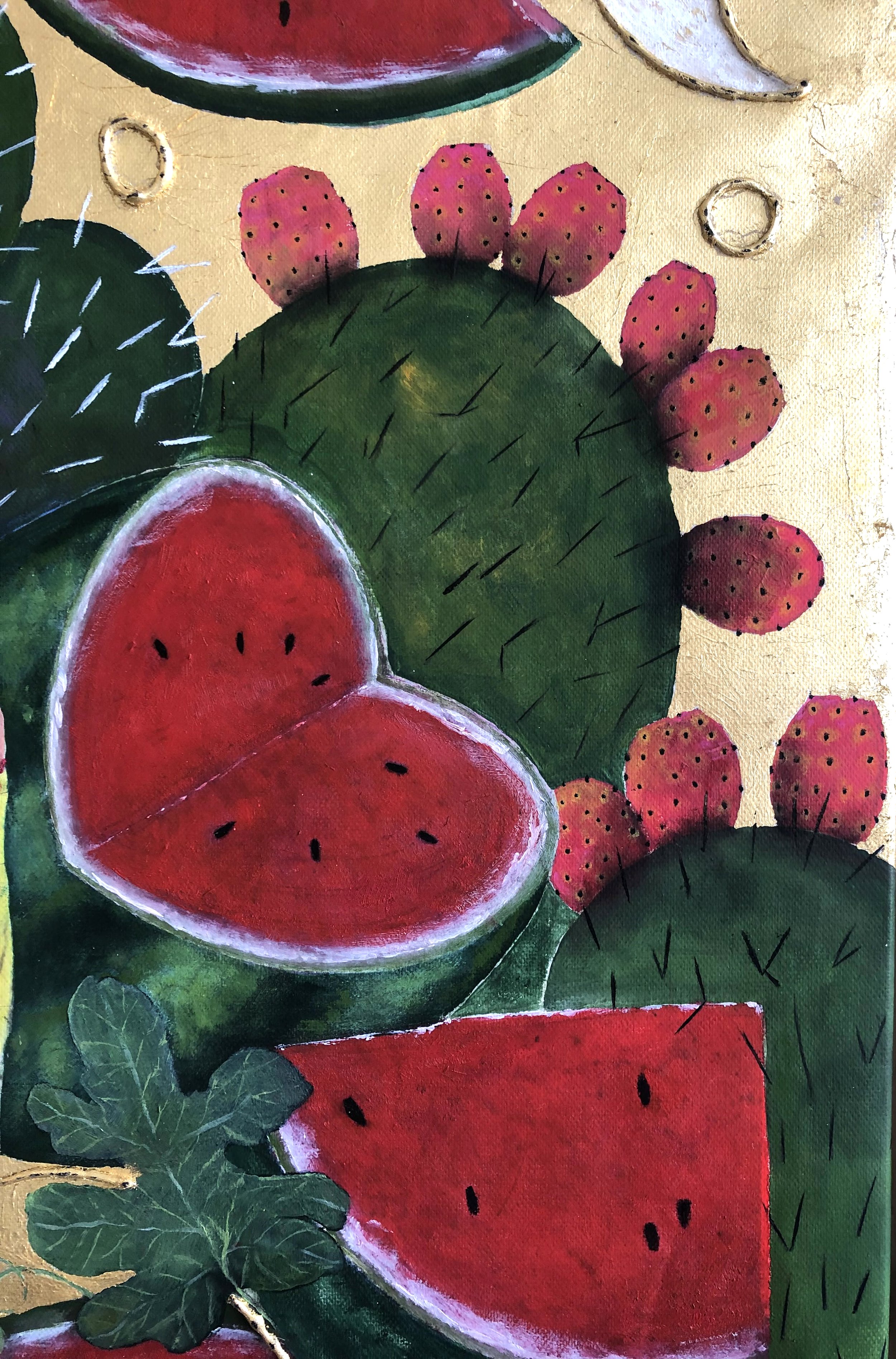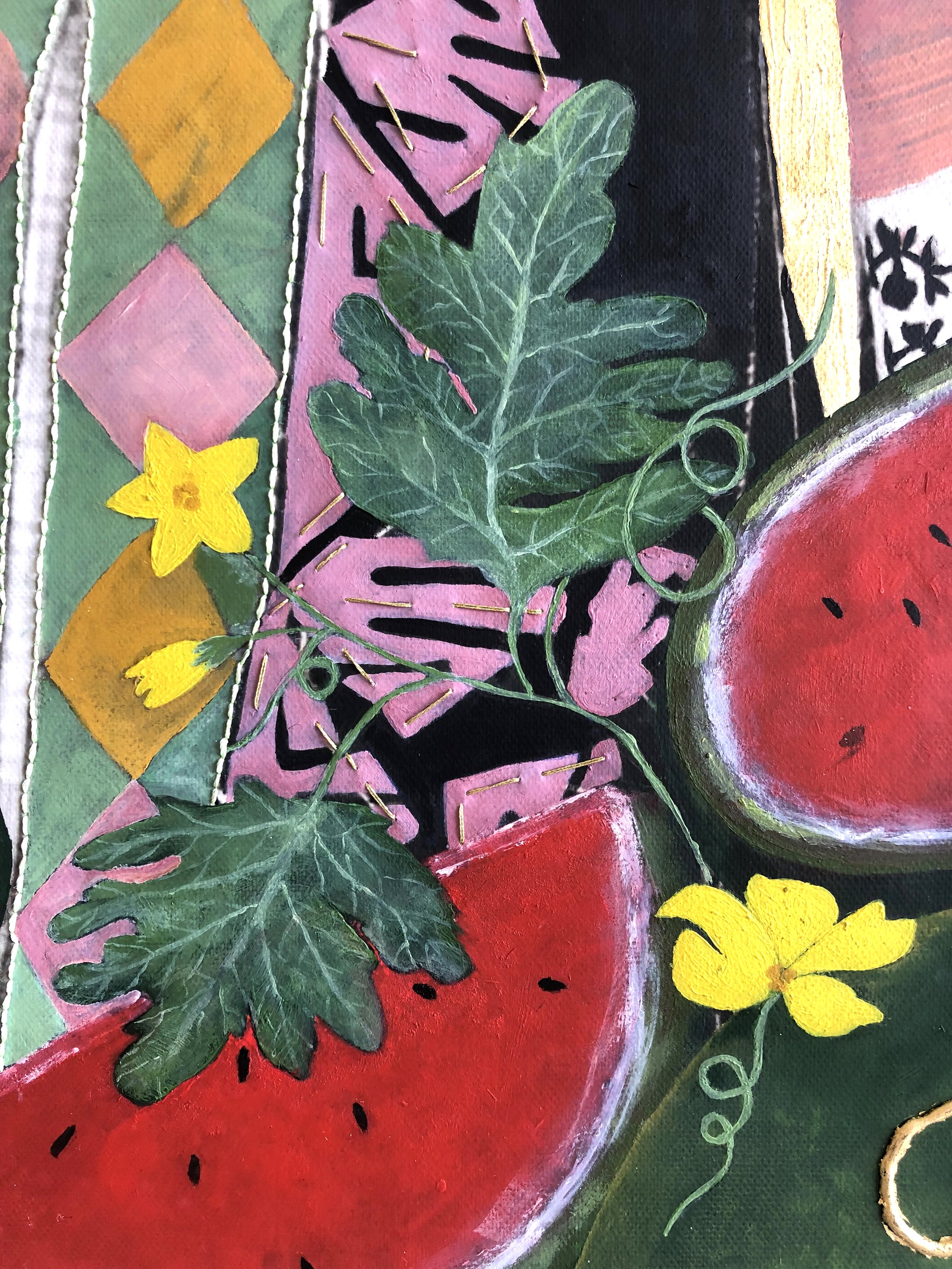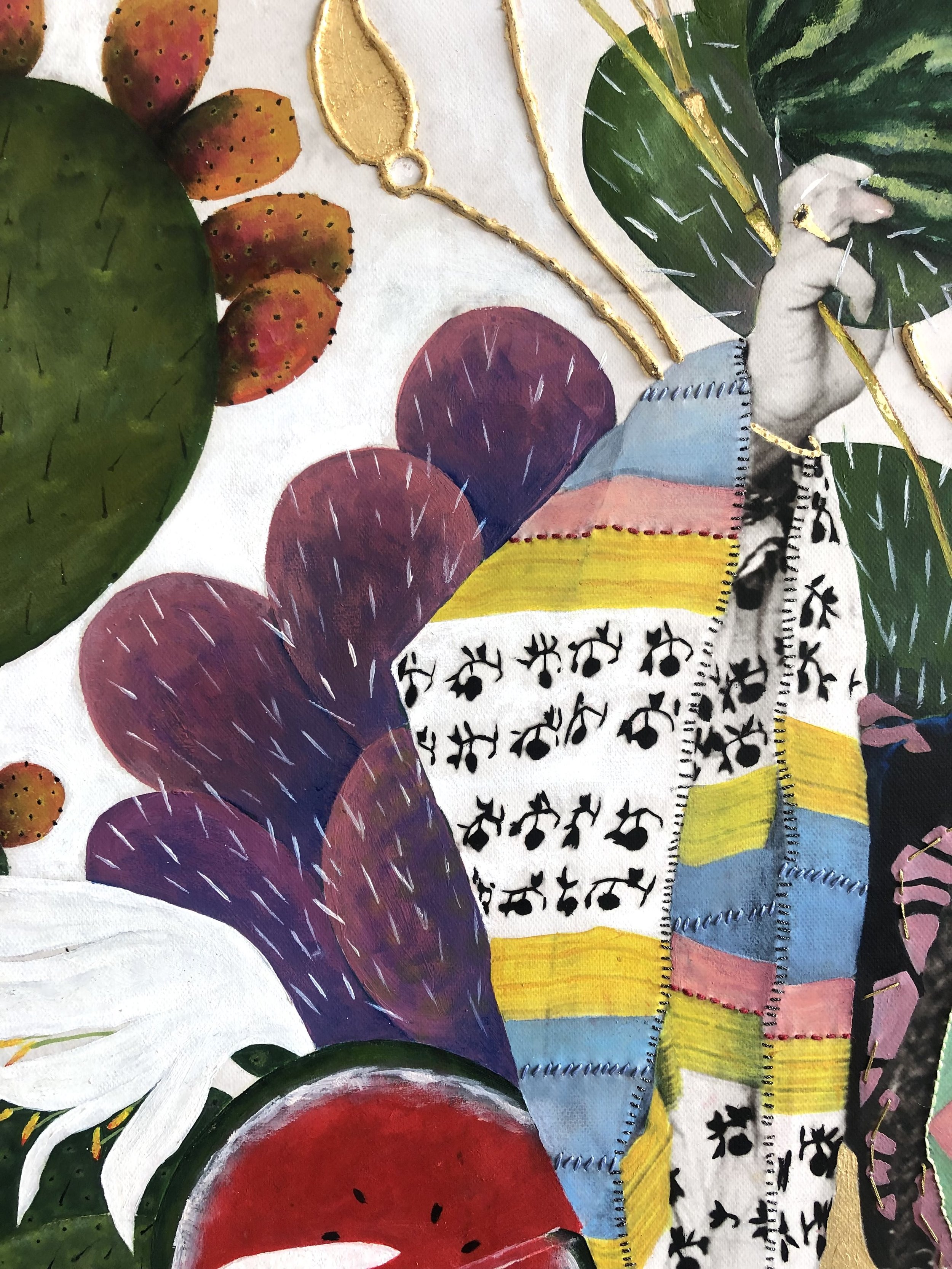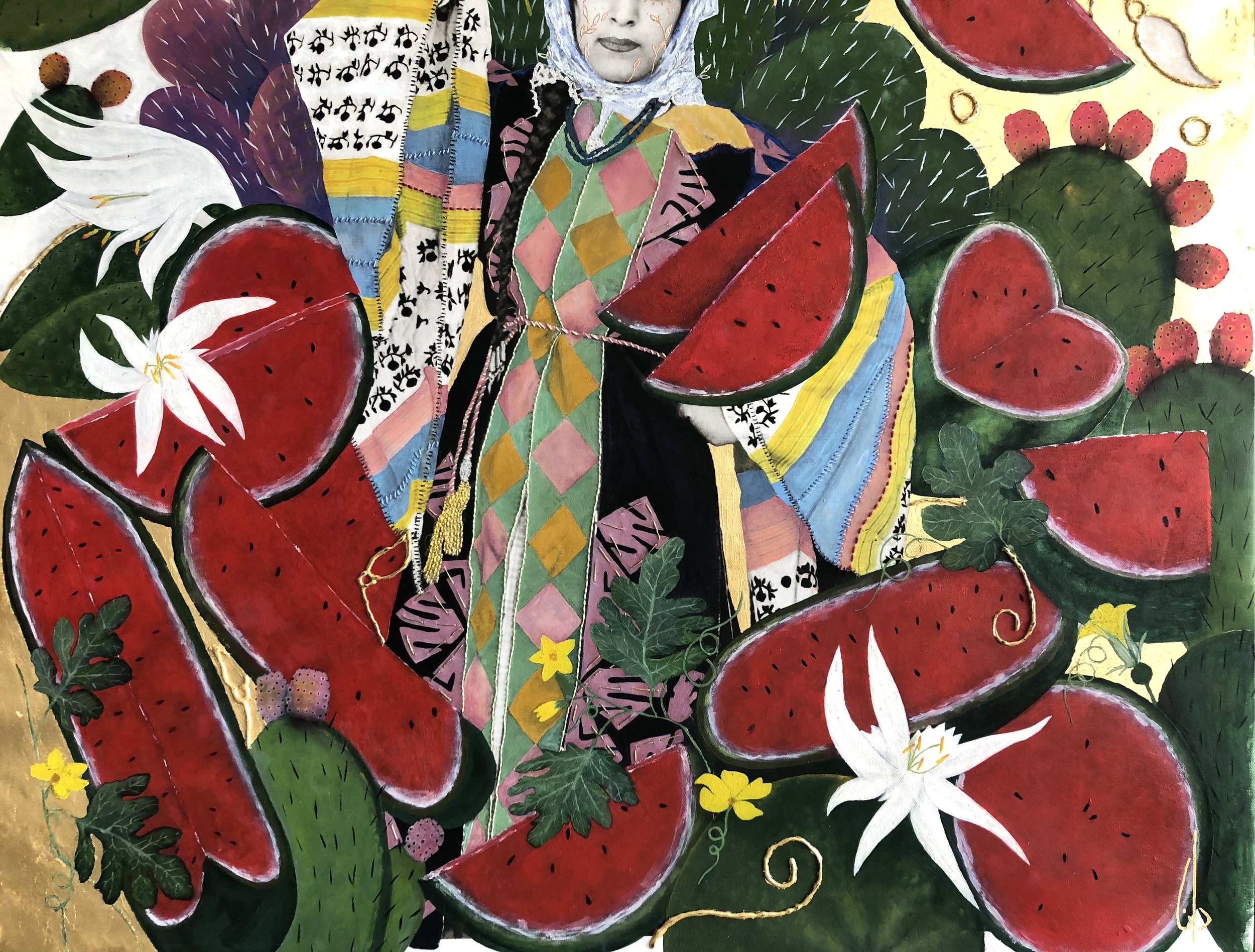Water-melons
2021
This artwork focuses on using Palestinian symbols of sovereignty, protest and resistance. It centers around the Palestinian woman and incorporates the watermelon as a sign of resistance and integrates oranges, fish, flowers and wheat as national symbols of indigenous sovereignty.
This work pays homage to Zakiya Shamout (Um Masoud), a Palestinian freedom fighter and the first Palestinian woman to give birth inside an Israeli prison. She hid a bomb in a watermelon.
In the 1980s the Israeli forces enforced a law banning the Palestinian flag or any artwork of political significance, and arrested anyone who held, raised, or exhibited the flag or its colors. Artists were not allowed to paint in red, green, black and white, they began painting watermelons as a sign of resistance.
The law was never revoked, and the police still cracks down on Palestinian flags in the occupied land.
Mixed media: Acrylic, Oil, Thread, Gold-leaf on canvas.
_
٢٠٢۱
يركز هذا العمل الفني على استخدام الرموز الفلسطينية للسيادة والاحتجاج والمقاومة, و يتمحور حول امرأة فلسطينية و البطيخ كرمزية للمقاومة و يستعمل البرتقال والأسماك و شقائق النعمان والقمح كرموز وطنية للسيادة الأصلية
يشير هذا العمل لزكية شموط (أم مسعود)، المناضلة الفلسطينية وأول امرأة فلسطينية تُنجب داخل سجن إسرائيلي. زكية أخفت قنبلة في بطيخة.
في الثمانينيات ، فرضت القوات الإسرائيلية قانونًا يحظر العلم الفلسطيني أو أي عمل فني ذو مغزى سياسي ، واعتقلت كل من حمل أو رفع أو عرض العلم أو ألوانه. لم يُسمح للفنانين بالرسم باللون الأحمر والأخضر والأسود والأبيض ، فبدأوا في رسم البطيخ كرمز للمقاومة
لم يتم إلغاء القانون ، ولا تزال الشرطة تهاجم الأعلام الفلسطينية في الأراضي المحتلة.
وسائط مختلطة: أكريليك ، زيت ، خيط ، ورقة ذهبية على قماش.
Watermelons
Original Artwork Sold

